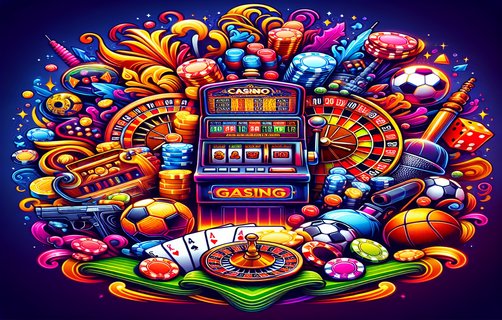Understanding the Gambler's Dilemma: Analyzing Strategies and Outcomes in Ratan Satta and Beyond

In the world of gambling, particularly in games like Ratan Satta, the allure of winning often overshadows the underlying statistical realities and risks involved. This report aims to explore gambling strategies from the loser's perspective—specifically focusing on YouTube casinos, gambling tools, Pai Gow, round-robin betting, tactical betting, and the concept of maximizing expected value. By dissecting these elements, we can gain a clearer understanding of the psychological and analytical processes that underlie gambling decisions.
YouTube Casinos have gained significant popularity, providing a virtual platform where people can engage with various games without the physical constraints of a brick-and-mortar establishment. However, the impact of streaming on gambling culture can be profound. Many viewers are drawn to the excitement and the potential for quick wins showcased by influencers, often leading them to underestimate the inherent risks. From the loser's perspective, it is vital to recognize that the high-energy presentations may omit crucial warnings about bias and the probabilities stacked against them.
Gambling Tools such as calculators or odds analyzers can give players a theoretical edge by assisting in decision-making. Yet, for many, these tools can become a false sense of security. The mathematics of chance remains unforgiving, and players often overestimate their understanding of odds. When considering Pai Gow, a traditional Chinese gambling game that involves both strategy and luck, one must acknowledge that even with the best tools, the game's complexity can lead to miscalculations, especially under pressure. The drawn-out nature of Pai Gow means that even losing players can experience moments of hope, but these instances can mask a steady decline in their capital over time.
Round-robin betting is another strategy that players often pursue in hopes of uncovering value in their wagers. This system allows gamblers to place multiple bets in a single arrangement, theoretically minimizing risk while maximizing potential payouts. However, from a loser's perspective, the potential for losses is equally multiplied. Many players fail to analyze the expected value of each individual bet comprehensively, leading to the dangerous trap of overconfidence. Tactical betting, which encompasses various styles and approaches, may seem appealing; however, inconsistent execution often results in erratic outcomes, reinforcing the idea that many strategies are ultimately flawed in practice.

To understand maximizing expected value, it is essential to grasp the concept of risk-reward trade-offs intrinsic to gambling. While seasoned players may seek to optimize their bets based on historical data and statistical analysis, the reality is that the house always has an edge. Thus, the analysis process should begin by assessing the probability of winning against the potential payout. Each player must factor in their bankroll, emotional state, and level of commitment when determining their approach, as these personal influences can heavily skew decisions toward risks that would otherwise seem illogical.
In conclusion, the exploration of gambling strategies and tools reveals a complex interplay between hope and reality. Understandably, the emotional and psychological facets can cloud judgment, often leading to poorly informed decisions. As gambling enthusiasts engage more with platforms like YouTube casinos and employ various betting tactics, they must maintain a critical perspective on their choices. Only through a thorough analysis of the risks involved can players hope to avoid the trappings of a loser's mentality, ultimately taking control of their gambling experience.
